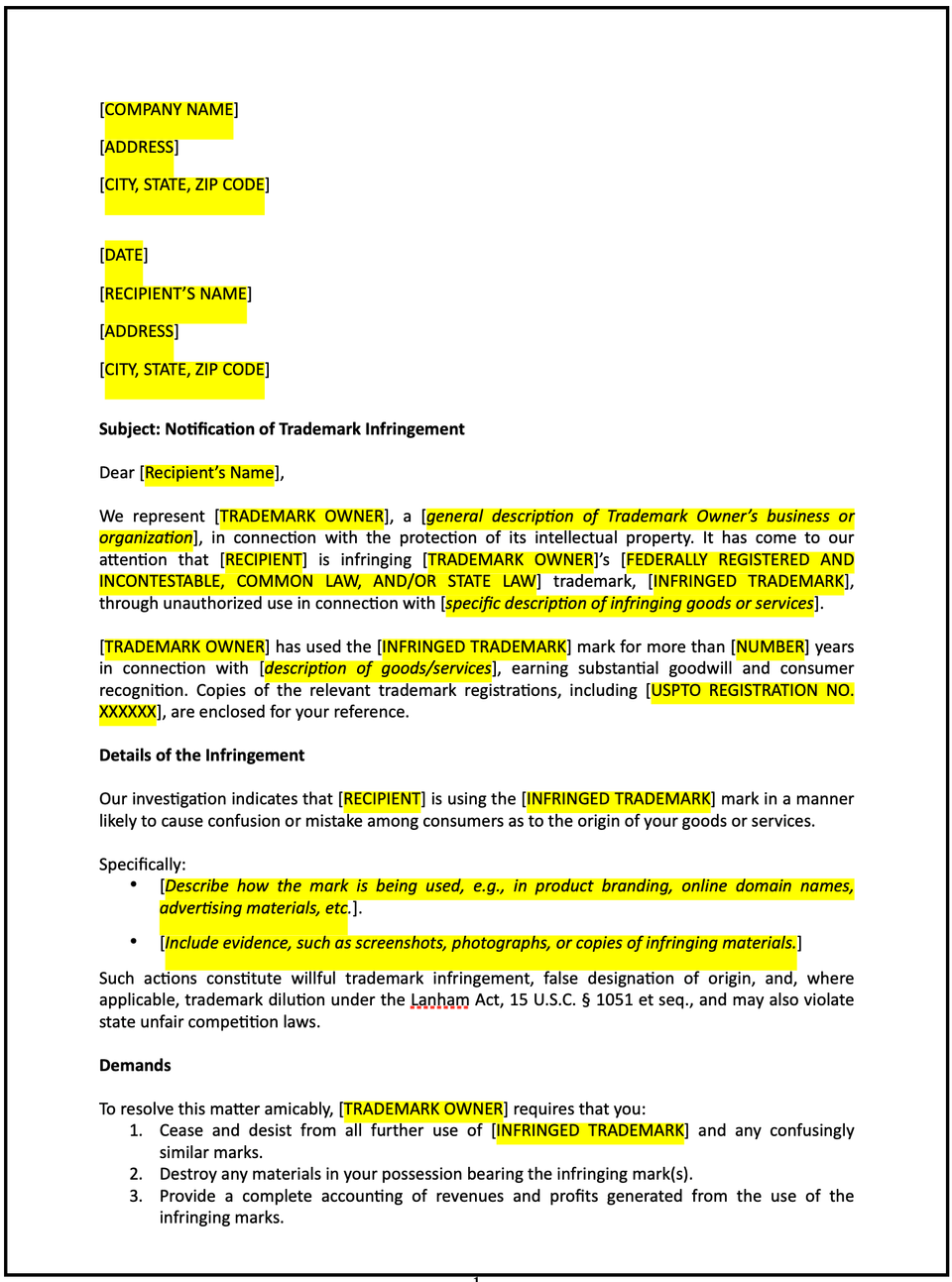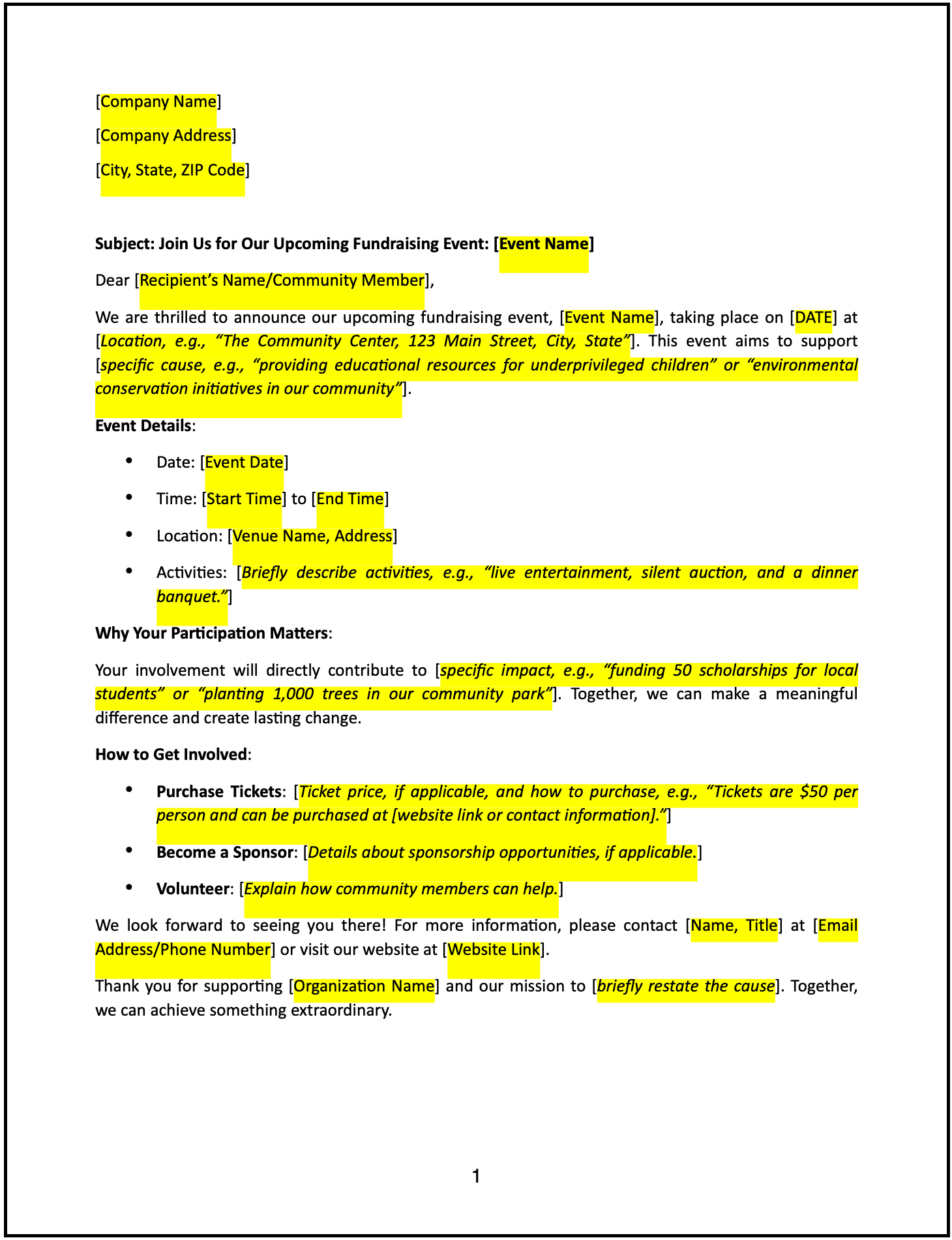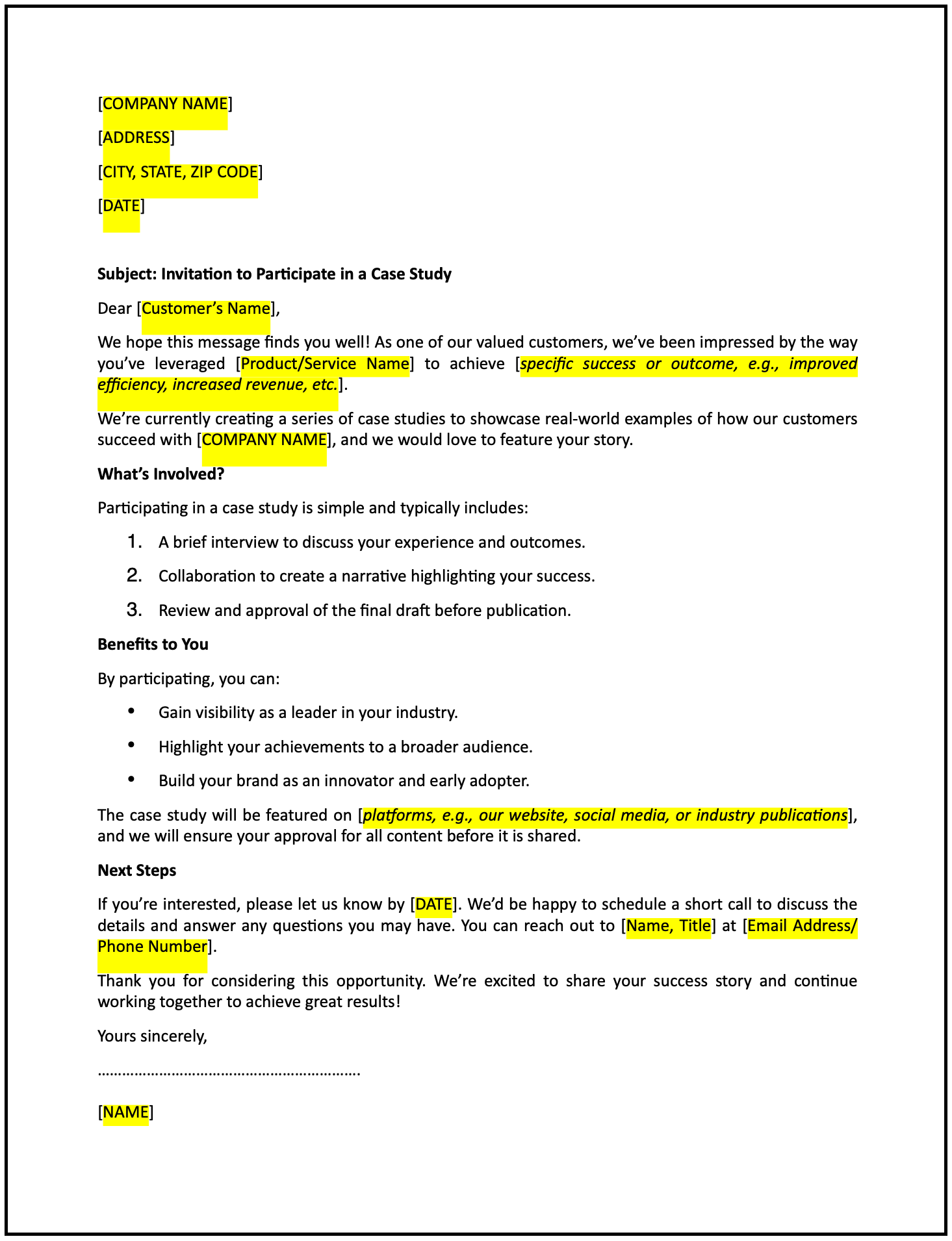Trademark infringement cease and desist letter: Free template

Trademark infringement cease and desist letter
A trademark infringement cease and desist letter is a formal communication used to notify an individual or organization that they are unlawfully using a trademark without authorization. It serves as an official notice that their actions are infringing on your rights and must be stopped immediately.
This letter typically outlines your ownership of the trademark, describes how the infringement has occurred, and demands that the recipient stop all unauthorized use. It also provides a path toward resolution and warns of potential legal action if the issue is not addressed. Sending this letter helps protect your intellectual property and serves as an important step in enforcing your rights before escalating to litigation.
How to use this trademark infringement cease and desist letter
- Open with an introduction: Address the recipient respectfully and state the purpose of the letter. Clearly indicate that the letter serves as formal notice of trademark infringement.
- Identify the trademark: Describe the trademark being infringed, including the registration number (if applicable), the owner, and distinguishing characteristics that make it unique and recognizable.
- Outline the infringement: Explain how the recipient is using the trademark without permission. This may include the use of similar branding, logos, product names, domain names, marketing materials, or packaging that creates confusion with your mark. Include examples and any available evidence such as screenshots, photographs, or links.
- Cite ownership and legal basis: Reaffirm your ownership of the trademark and its registered or common law status. Reference applicable trademark laws, such as the Lanham Act or relevant state law, to support your position.
- Demand cessation of use: Clearly instruct the recipient to stop all unauthorized use of the trademark immediately. This includes removing infringing content from websites, advertisements, product labels, or any other materials where the mark is used.
- Propose a resolution: Offer a way to resolve the matter amicably. This may include signing a written assurance to cease use, agreeing to remove the infringing materials, or entering into a licensing agreement if appropriate.
- Warn of potential consequences: Explain the actions you are prepared to take if the infringement continues. This may include legal proceedings for injunctive relief, damages, or other remedies available under trademark law.
- Maintain a professional tone: While firm and assertive, keep the tone respectful and focused on resolution. Avoid overly aggressive or emotional language.
- Provide contact information: Include your name, title, business name, email address, and phone number to make it easy for the recipient to respond or raise questions.
Benefits of using a trademark infringement cease and desist letter
- Promotes legal awareness: Helps the recipient understand that their actions are infringing on protected trademark rights and must stop.
- Establishes professionalism: A formal letter shows that you are addressing the matter seriously and through appropriate legal channels.
- Encourages voluntary compliance: A clear and reasonable request often leads to faster resolution without the need for litigation.
- Strengthens your legal position: Demonstrates that you took reasonable steps to enforce your rights before pursuing further legal action.
- Creates a documented record: Provides written evidence that you notified the infringer and gave them an opportunity to correct their behavior.
Tips for writing an effective trademark infringement cease and desist letter
- Be specific: Identify the trademark in detail, and explain exactly how the recipient’s actions amount to infringement.
- Use professional language: Be direct and assertive, but remain respectful and focused on resolving the issue.
- Provide clear legal context: Reference the laws and contractual rights that support your claim.
- Highlight required actions: Clearly explain what the recipient must do to resolve the matter, such as ceasing use, removing content, or responding in writing.
- Include next steps: Suggest a clear path forward, including timelines for compliance or follow-up.
- Keep it structured: Use clear headings or bullet points to organize your message and make it easy to understand.
Frequently asked questions (FAQs)
Q: What details should I include in this letter?
A: Include the trademark name, registration number (if applicable), evidence of infringement, a demand to cease use, and the consequences of non-compliance.
Q: Should I personalize the letter?
A: Yes, addressing the recipient directly and referring to specific infringing materials increases clarity and professionalism.
Q: Who typically sends this letter?
A: Trademark owners, legal counsel, brand protection teams, or authorized representatives send this letter on behalf of the rights holder.
Q: How formal should this letter be?
A: The letter should be professionally written, clear, and assertive, with a focus on legal accuracy and resolution.
Q: When should this letter be sent?
A: As soon as the trademark infringement is identified, to reduce harm and preserve your trademark rights.
Q: Can this letter include a licensing proposal?
A: Yes, if appropriate, you may propose a licensing arrangement as an alternative to discontinuing use of the mark.
Q: Is acknowledgment from the recipient required?
A: Yes, asking for written acknowledgment helps confirm that the recipient has reviewed the letter and is taking steps to comply.
This article contains general legal information and does not contain legal advice. Cobrief is not a law firm or a substitute for an attorney or law firm. The law is complex and changes often. For legal advice, please ask a lawyer.


